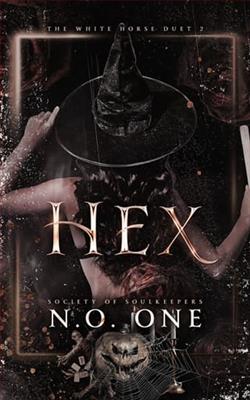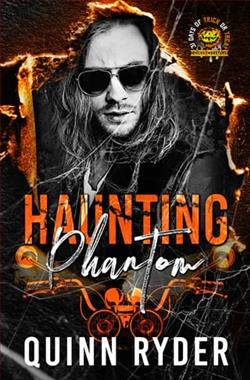Page 51 of The Devil Colony (Sigma Force 7)
From the circles under Painter’s eyes, it looked like he could also use some sleep, but something was certainly troubling him. Hank suspected it didn’t even relate to the matter at hand. The man was too slow to broach whatever subject he wanted to discuss, his manner distracted. Something else was going on. He’d been on the phone all morning. Maybe it had to do with the strange volcanic eruption, maybe another matter. All Hank knew: it had the man on edge.
Eventually Painter cleared his throat and folded his hands on the tabletop. “I’m going to be frank with you, and I hope you’ll do the same. People have died, and more will, too, if we don’t get a better understanding about what we’re facing.”
Hank bowed his head slightly. “Of course.”
“I’ve spoken to our geologist, who’s monitoring the volcanic activity at the blast site. We believe we have a rudimentary understanding of what was hidden in that cave. It involves the manipulation of matter at the nano-level. We also believe those ancient people created—whether deliberately or accidentally—an unstable compound, something active and explosive, that requires heat to keep it dormant. That’s why it was hidden in a geothermal area, where it would be kept warm and safe for centuries.”
A flare of guilt burned through Hank. “That is, until we removed it from that heat source.”
“And it destabilized. In the wake of that explosion, it released what our geologist calls a nano-nest, a mass of nanobots, microscopic nanomachines that eat through matter, with the potential to spread outward indefinitely. But whether through luck or planning by these ancient people, the heat of the erupting volcano killed the nano-nest, stopping it.”
Horrified, Hank closed his eyes for a moment. Maggie . . . what did we do? He spoke quietly. “That’s why the old stories about the cave warned against trespassing there.”
“And it may not be the only cave like that.”
Hank opened his eyes and pinched his brows. “What are you talking about?”
“There may be another site in Iceland.”
Iceland?
Painter went on to explain how neutrinos from the Utah blast may have lit the fuse on a potential second cache of this substance.
“The Iceland deposit is destabilizing as we speak,” Painter finished. “We have other people in the field investigating it, but there’s one key piece of this puzzle that we’re missing.”
Hank stared the man in the eye, waiting.
“We have some grasp as to what was hidden at these sites—but not who hid them. Who were these ancient people? Why did they appear Caucasian, yet wore Native American garb?”
Hank’s mouth went dry. He had to break eye contact, staring down at his hands.
Painter pressed on: “You know something, Hank. I heard you arguing with Dr. Denton back at his lab. Such knowledge could be vital to fully understanding the danger we face.”
Hank knew the man was right, but such answers trod a dangerous line between his blood heritage and his faith. He was reluctant to divulge what he suspected without further proof. Though maybe now he had that proof.
“It was just a theory,” Hank said. “Matt may have been a physicist, but he was also a devout Mormon, like myself. Our discussion—Matt’s conclusions—were fanciful, not worth mentioning at the time.”
Painter cocked his head, fixing him with one eye. “But it is now.”
“Your mention of Iceland does offer some support for Matt’s theory.”
“What theory?”
“To answer that, you have to understand a much-disputed section of the Book of Mormon. According to our scripture, Native Americans were said to be the descendants of a lost tribe of Israel, who came here after the fall of Jerusalem in roughly 600 BC.”
“Hold on. Are you actually claiming Indians rose from a Jewish tribe who got exiled here?”
“According to a literal reading of the Book of Mormon, yes. Specifically they are the descendants of the Manasseh clan of Israelites.”
“But that makes no sense. There’s plenty of archaeological evidence that people were living in the Americas long before 600 BC.”
“I am well aware of that. And while it seems contradictory, the Book of Mormon also does acknowledge those people, those early Native Americans. It even makes reference to people living here when that lost tribe of Israelites arrived out west.” Hank held up a hand. “But let me continue and perhaps I can clear up that conflict through an interpretation of Mormon scripture that’s less literal and more allegorical.”
“Okay. Go on.”
“According to a direct interpretation of the Book of Mormon, the band of Israelites who came to America consisted of two families led by a common father, Lehi. The two branches were the Nephites and Lamanites. I’ll skip over the more complicated details, but in the end, around a thousand years later, the Lamanites slaughtered the Nephites and became the Native American tribes of today.”
Painter looked unconvinced. “The story sounds more racist than historical. And I know there’s certainly no DNA support for a genetic lineage of Native Americans back to European or Middle Eastern origin.”
“I agree. Genetic studies have resoundingly shown Native Americans to be of Asiatic origin, likely crossing the Bering Strait and descending into the continent. Believe me, over the years, Mormon scientists and historians have bent over backward trying to link Native Americans to a Jewish heritage and only succeeded in embarrassing themselves.”
“Then I don’t understand where this is going.”
“Today, most Mormons believe a more allegorical version of that part of our scripture. That a lost tribe of Israelites did come to America, that they encountered the indigenous clans—the Native American people.” Hank motioned to both himself and Painter. “The Israelites settled among our tribes, perhaps tried to convert them, to bring them under the Abrahamic covenant. But the Israelites kept mostly to their own clan, becoming just another tribe among the many Indian nations. That’s why there’s no lasting genetic trace.”
“Such an explanation sounds more forced than convincing.”
Hank felt a flash of irritation. “You asked for my help. Do you still want it?”
Painter held up a palm. “I’m sorry. Go on. But I think I know where this is headed. You believe the mummified bodies in the cave were members of that lost Jewish tribe.”
“Yes. In fact, I believe they were the scripture’s Nephites, who were described in the Book of Mormon as being white-skinned, blessed by God, and gifted with special abilities. Does that not sound like those poor souls we found?”















